Long-Term Review
Rat-bagging the 2019 FOX 36 GRIP2 & FLOAT X2
Fox unveiled new dampers in early April 2018 and the integration of their GRIP damper, typically seen on their low-end forks, took many by surprise. This isn't the same damper seen in wallet-friendly options however, it's an evolution. In an industry where we normally wait for technology to trickle down, Fox showed us that it can climb up to the higher end models. The GRIP2 damper takes the coil sprung IFP of its simpler sibling but includes four-way damping, rather than two.
Features:
- Fit GRIP2 Damper
- Externally adjustable HSC, LSC, HSR and LSR
- Float EVOL Air Spring
- 150mm (FIT4 only), 160, 170 or 180mm travel
- 15 x 110 QR, 15 x 100 QR, or Kabolt 110 axle options
- 29-inch wheel 150mm and 160mm travel (tested)
- 27.5-inch wheel 160, 170 and 180mm travel
- 26-inch wheel 160mm and 180mm available w/ 15mm x 100 axle (convertible to 20mm)
- MSRP: Ranges from 899 USD for the Performance Elite FIT4 to 1,065 USD for the FLOAT FIT4 GRIP2 (tested)
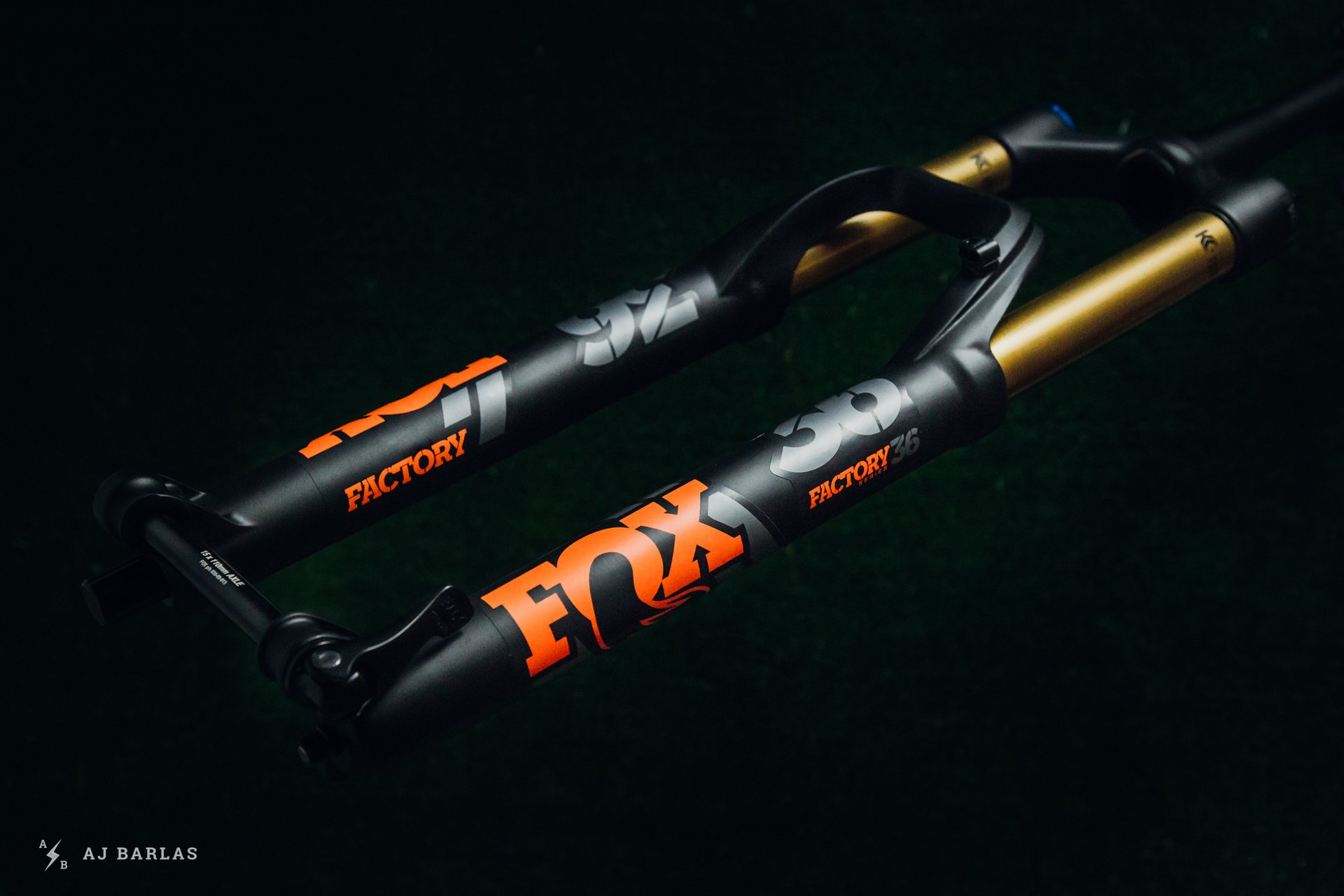
The 2019 FOX FIT4 GRIP2 36
The 36 RC2 included both high and low-speed compression damping and one rebound adjustment. The new GRIP2 damper retains the compression adjustability but expands to high and low-speed rebound adjustability. Tunable range of the 2019 36 is claimed to be wider, and in practice this was quickly confirmed. On the RC2 model I ran the compression damper close to open, but with the new GRIP2 damper both low and high-speed compression have been set further in.
GRIP dampers work in a similar fashion to an MX fork. Where the old RC2 damper made use of a bladder system, the GRIP damper allows excess oil to move through the circuit. At some point, despite measures taken to keep them separate, this will happen with a closed system like in the previous model, and it will be service time. Encouraging this mixing allowed Fox to simplify the moving parts and permit constant lubrication thanks to the cycling of fluids. Fox touts improved durability and sensitivity.
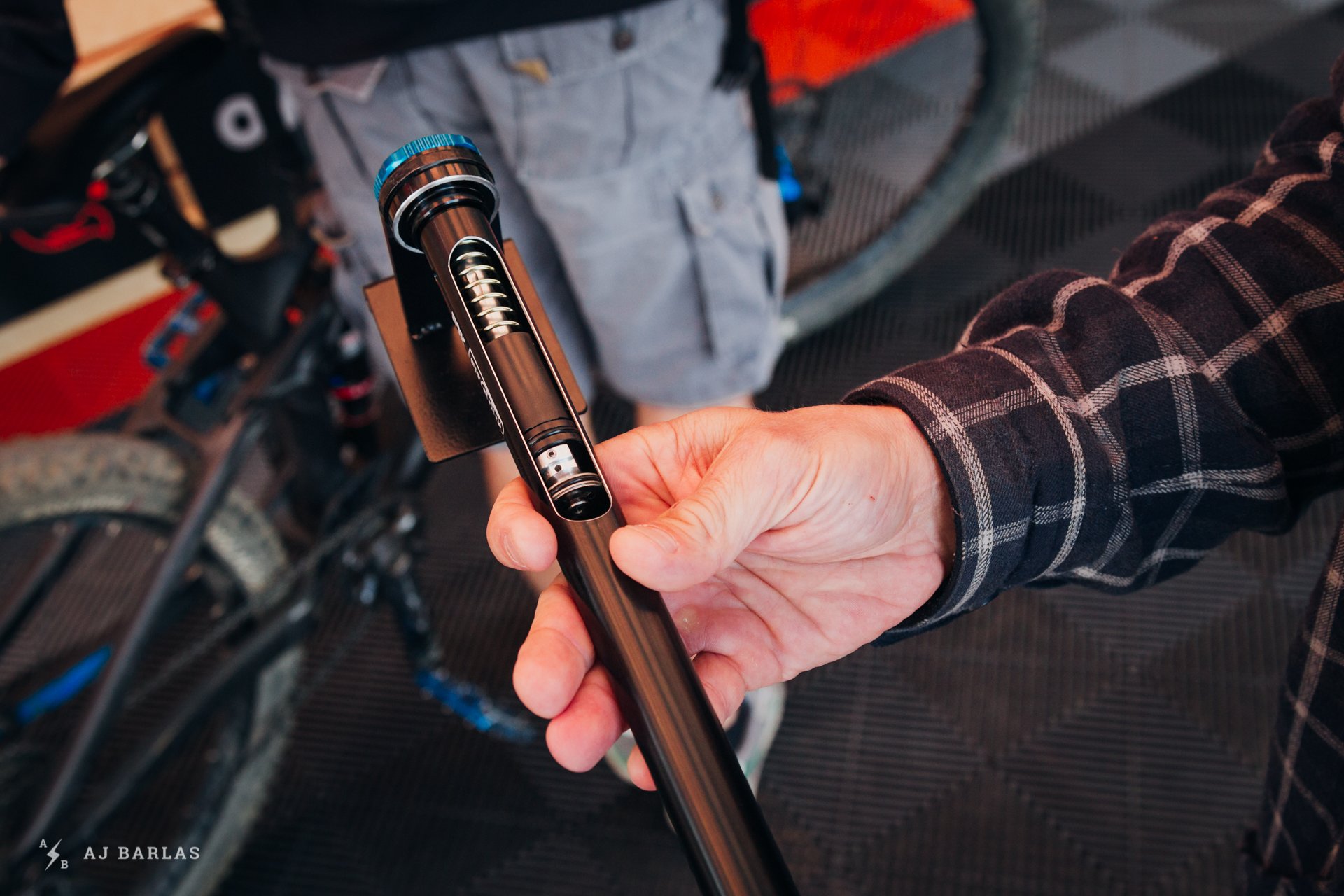
The spring-loaded IFP of the GRIP2 damper cartridge.
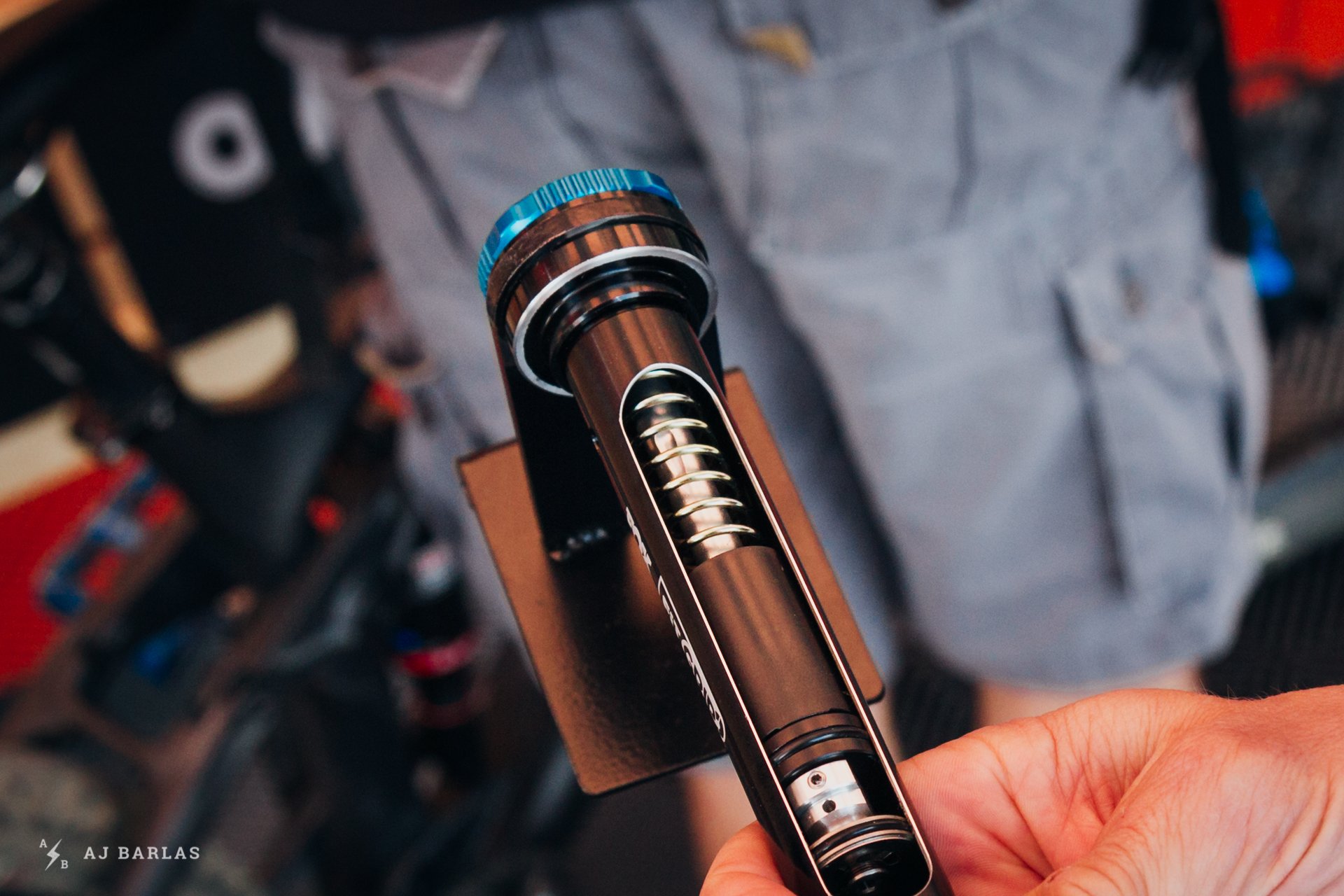
The teardrop beneath the spring allows for a small amount of oil to flow out through a hole in the side of the cartridge.
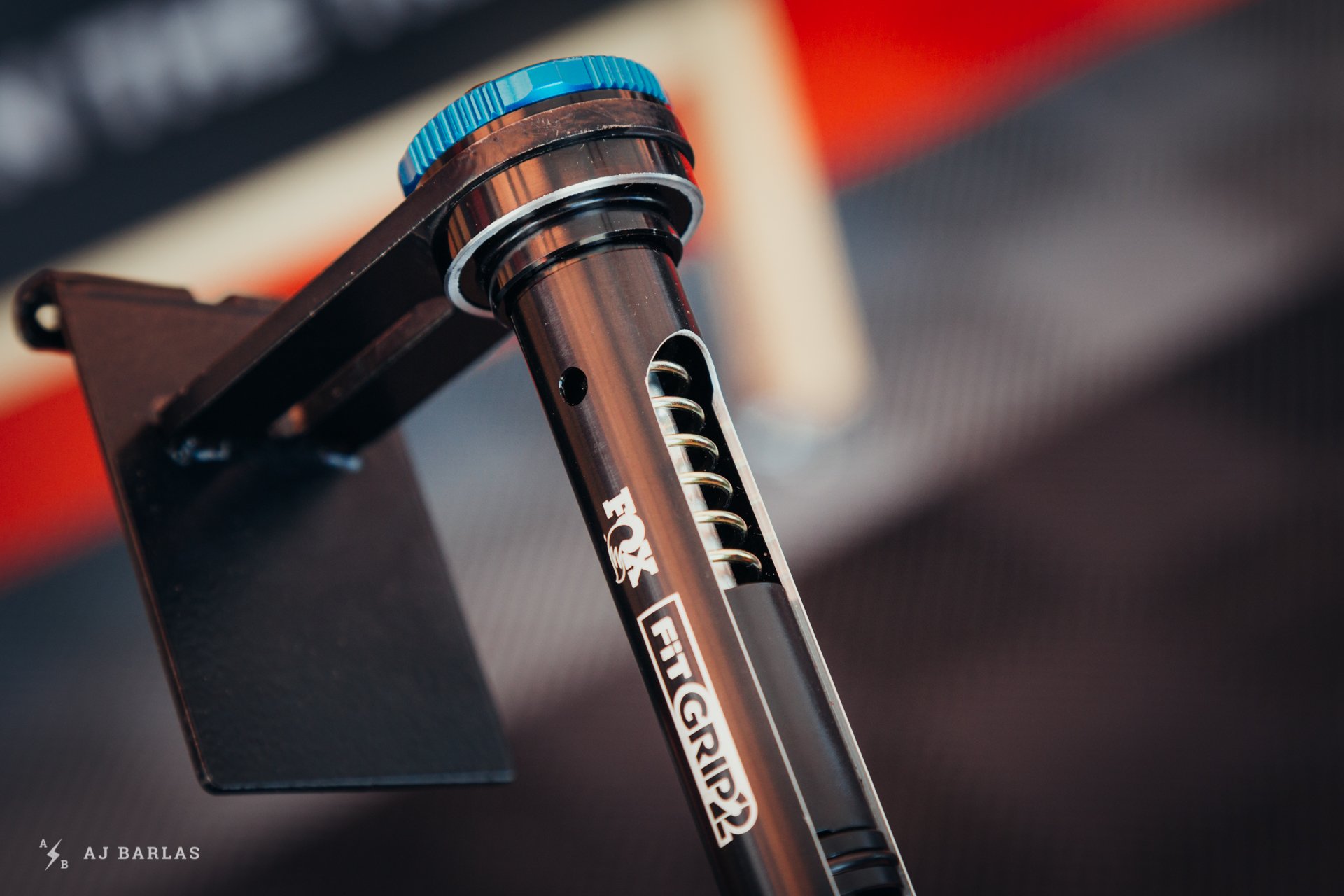
Oil can flow out of and into the rest of the fork via the hole seen here. Fox claims it allows for more consistent damping and better durability.
These changes are immediately noticeable at the top of the fork's travel. The first time on the new 36 provided an almost vague feeling thanks to how well the fork moves over obstacles. Once adjusted to the changes, the fork’s comfort is incredible. With trail feedback further minimized thanks to these improvements, hand and arm fatigue on long, rough trails were mostly absent. On the previous model, fatigue was noticeable in these situations. Previously, having a well-functioning air-spring that's light off the top often made it difficult to get good mid-stroke support. This is far from the case with the GRIP2, which has an incredible mid-stroke. Support is excellent, the fork remains high in its travel until the big hits come and there's no harshness to speak of when set up well. The fork's deep, supported feel provides confidence in all situations.
The GRIP2 damper’s high-speed rebound circuit is different. Rather than add preload to the valve, Fox engineered the HSR to work with a leaf spring. This allows users to change the flex of the leaf spring based on how open or closed the adjuster is. Fox notes that it's similar to re-valving the shims in the HSR circuit. Providing riders with the ability to externally adjust this in a single crown fork is a win.
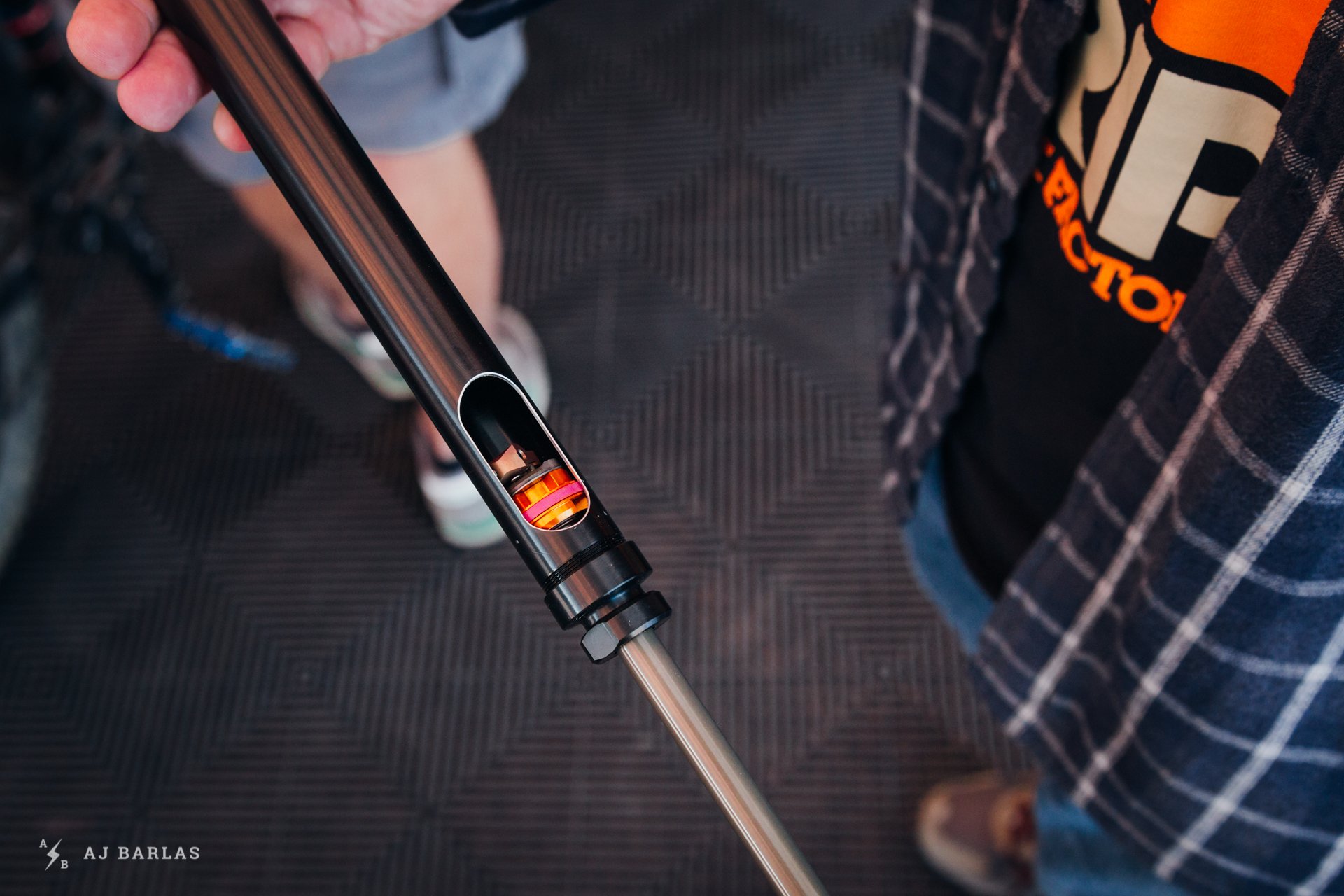
A look at the internals of the new rebound circuit.
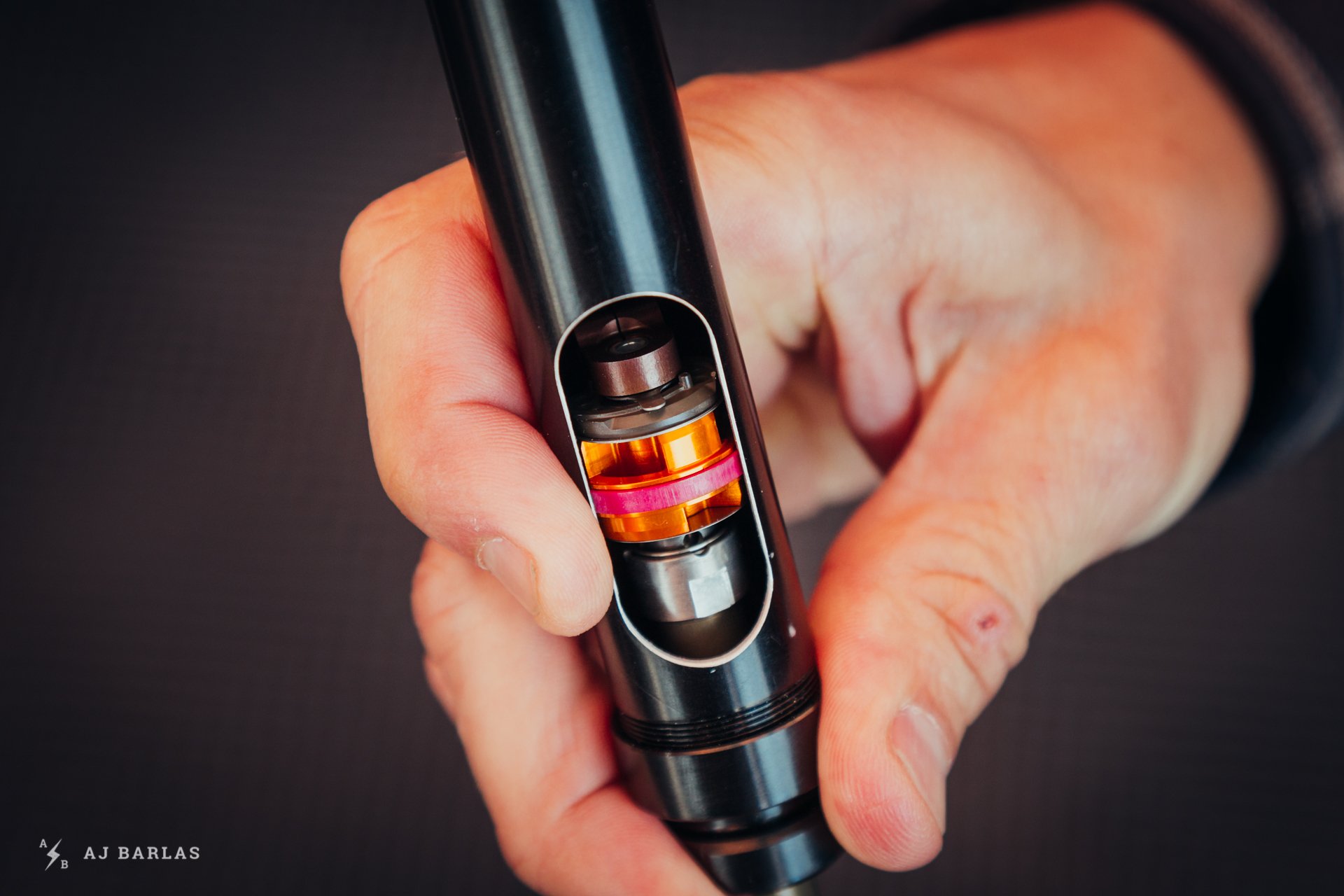
A closer look shows the leaf spring at the top.
The high-speed rebound adjustment in the GRIP2 damper is quite beneficial. There are eight clicks of HSR adjustment and each click makes a noticeable change. Initially, I set the HSR to four clicks out, but I found the ride unfavourable. Adjusting it to three clicks out provided a noticeable change in performance and for me, more comfort. For reference, my LSR is set between five and six clicks out depending on conditions, but the HSR has remained great at three out. Twisting the rebound dials provides a pronounced ‘click’, making adjustments easy and accurate.
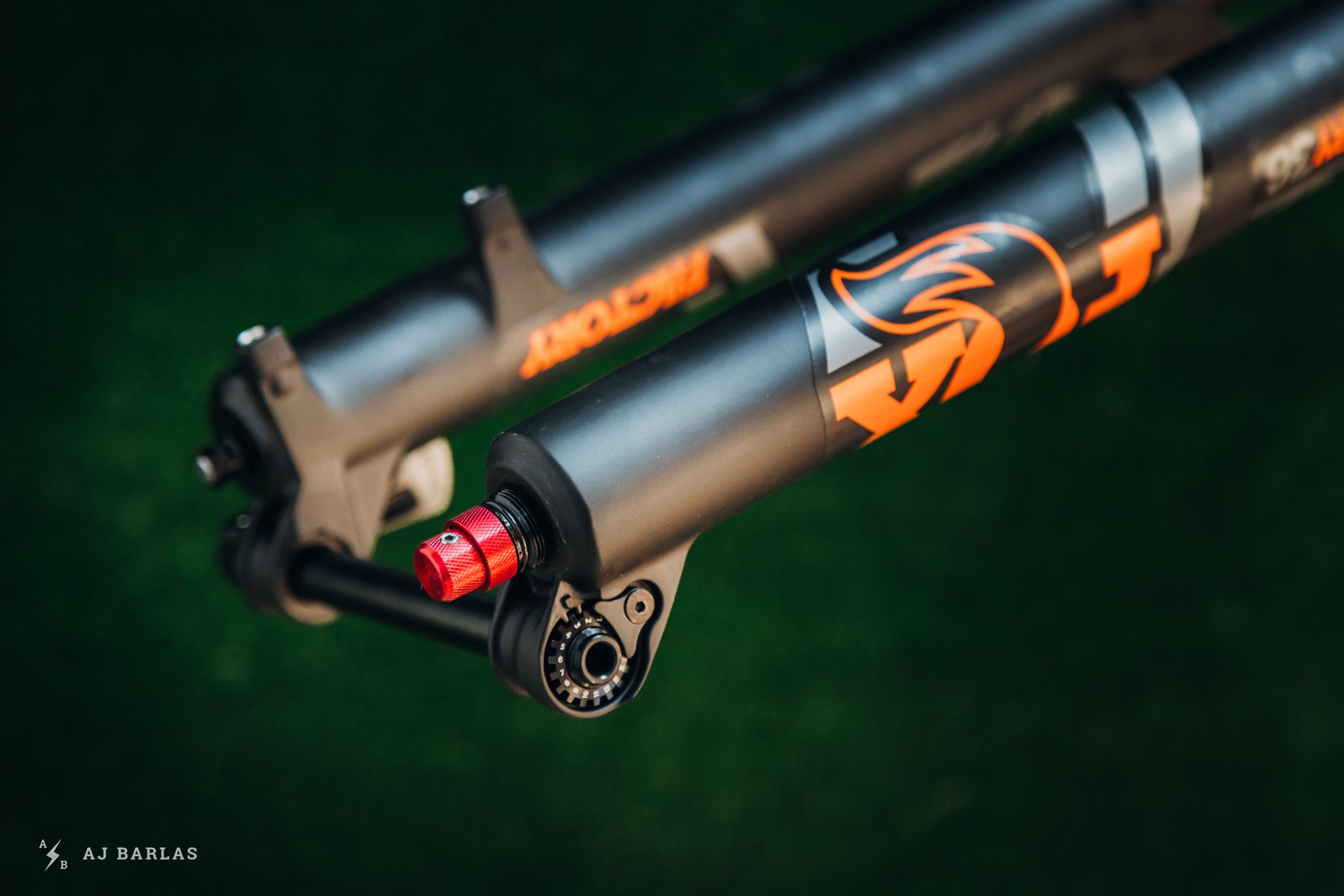
The smaller diameter section of the rebound adjust assembly is the LSR and the wider end, butted against the bottom of the fork, adjusts HSR.
At the compression end, adjustments are easily made with more light feeling dials at the top of the right fork leg. The low-speed compression dial moves with clear detents and audible clicks. The HSC adjuster is a little different feeling and doesn’t make a loud noise, so adjusting this circuit required extra care. The HSC dial requires less rotation than LSC and until I became accustomed, one click often turned into two or three.
Fox increased the size of the negative air spring again in the 36 and they also were able to use fewer seals. As with the changes to the fork’s damper, these improvements increase the ability for the 36 to smooth out trail chatter. The air spring can still be adjusted with the use of volume spacers which clip together, and then to the underside of the air-spring cap.
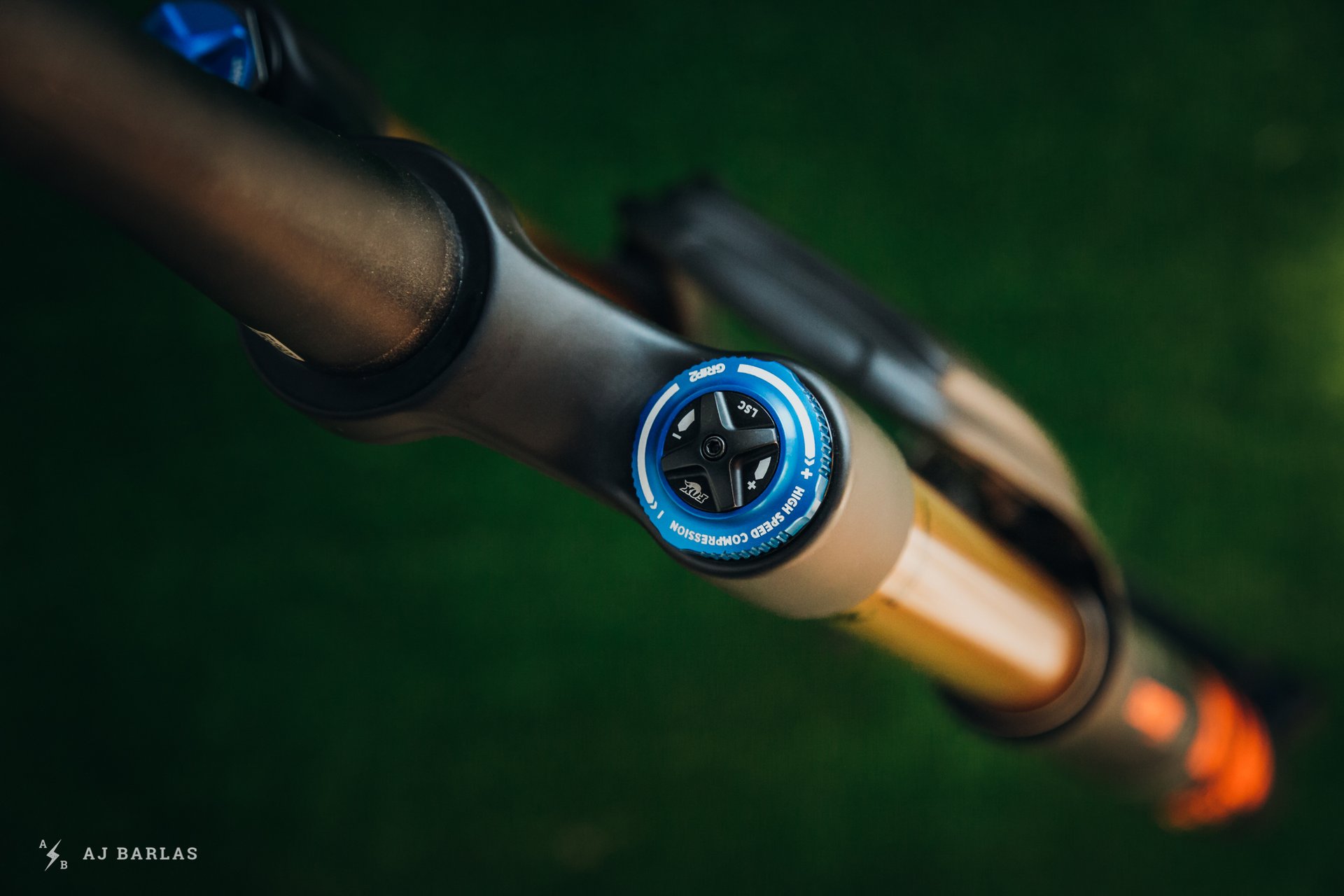
The updated HSC and LSC adjuster assembly.
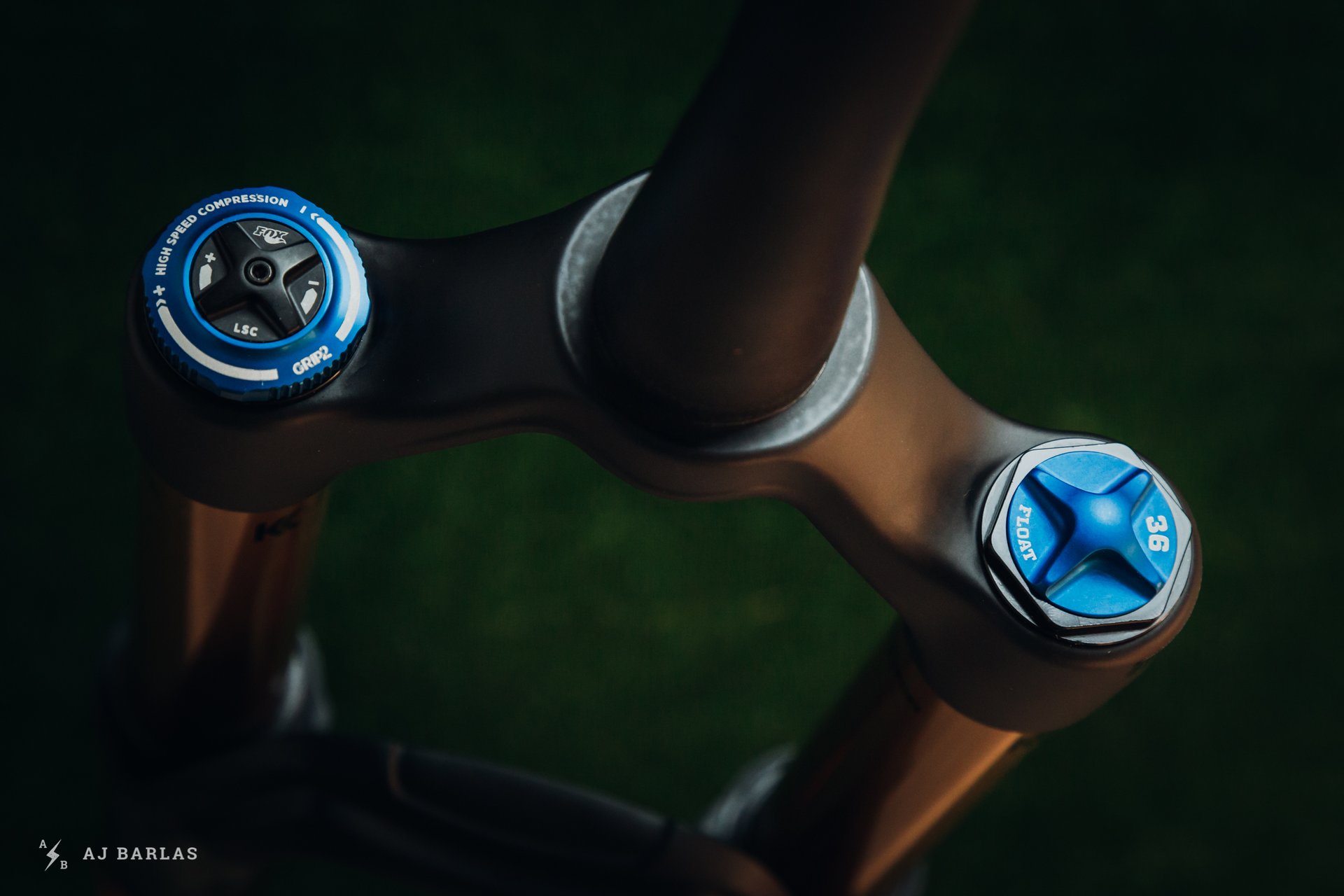
Externally the air spring looks the same.
The new 36 is the best fork I've ridden. It’s incredibly consistent regardless of the terrain, allowing the bike to hold a strong shape whether under heavy breaking in steep, holed out sections of trail, or high-speed chatter. Aggressive rider weight shifts do little to unsettle the fork and the spring provides the closest feel to a coil sprung fork I've felt.* It grants confidence to get over the front and push the bike into situations where others have left me hesitant. Having put more than 600km’s on the fork, I’m well past the service interval. And yet it still feels amazing in the dry, beat up trails we’re currently experiencing in the Coast Mountains of B.C. There’s no stiction, the seals are still working perfectly, and it hasn’t put a foot wrong.
*The 2019 Lyrik is said to be on par. Cam is currently testing that, so keep an eye out for a complete review.
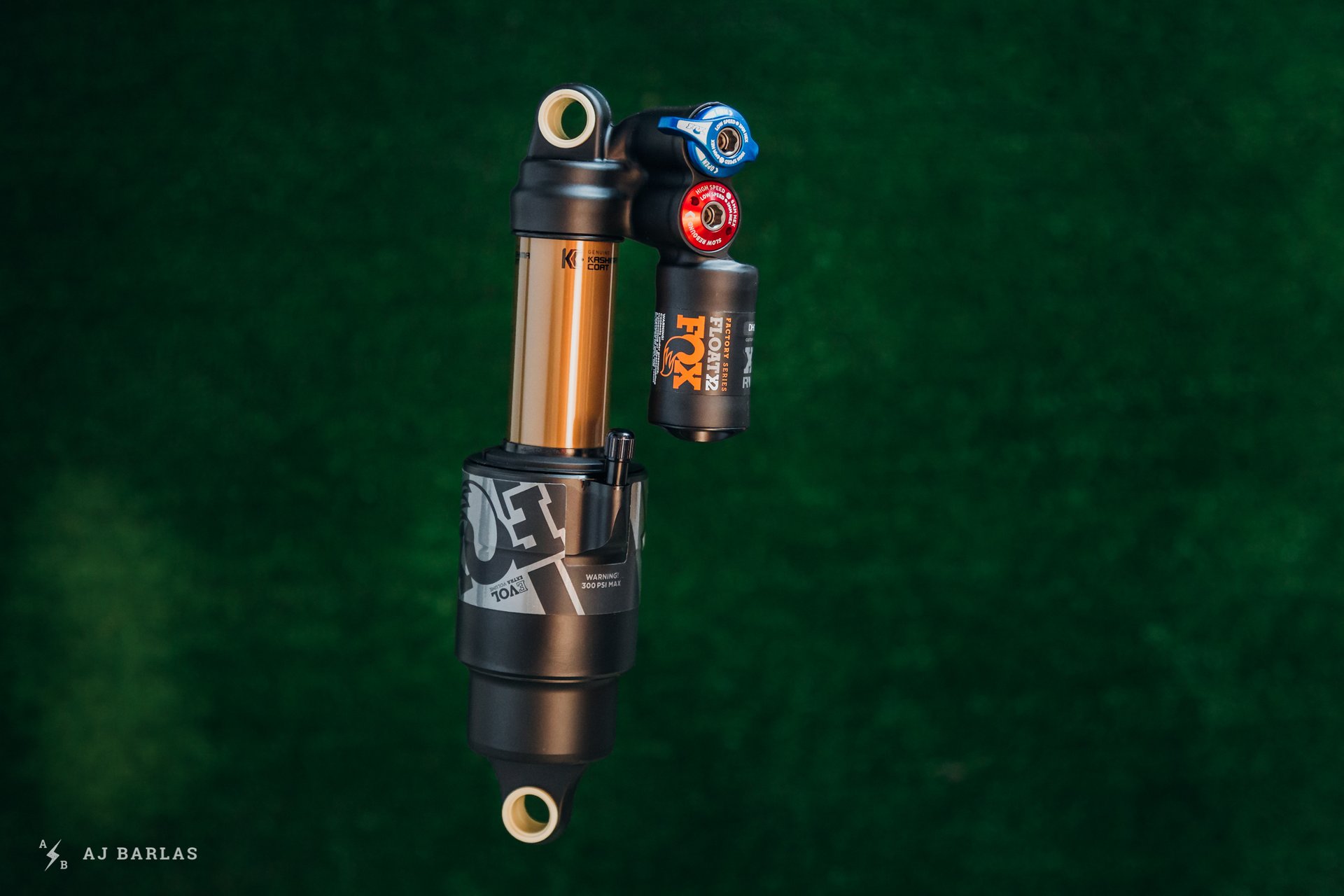
The 2019 FOX FLOAT X2
While most of the Float X2 remains unchanged for 2019, Fox updated the rear shock’s air can. The grub screw at the base of the can has been replaced with a circlip. This made it possible to bump the shock’s recommended maximum pressure up 50 pounds to 300psi. Internally, a mechanical bottom-out bumper has been added, providing a more progressive end-stroke. Some trail bikes feature relatively linear spring curves and combined with the Float X2’s linear stroke (thanks to the EVOL air spring) the new bottom out support could be helpful.
Fox informed me that the integrated bumper serves two functions. It acts as a bumper, similar to those seen on coil shocks, but also as a variable volume spacer. The effect of this is claimed to be less ramp at the end of the stroke from the air spring alone. Another subtle change is a slight angle on the air valve, easing shock pump access. It’s a small but positive change.
Setting up the 2019 X2 was easy since it was replacing the previous model on the same bike. Volume adjusters, dials, and air volume were set identical to the 2018 model. Everything felt similar but there was a subtle change noticed even prior to making it onto the trail. With the shock being brand new and no trail time, the change was pushed aside to begin with. On the trail and up to speed, the X2’s altered end stroke was more pronounced. The integrated bottom out bumper had a noticeable effect on how the bike reacted during bigger hits.
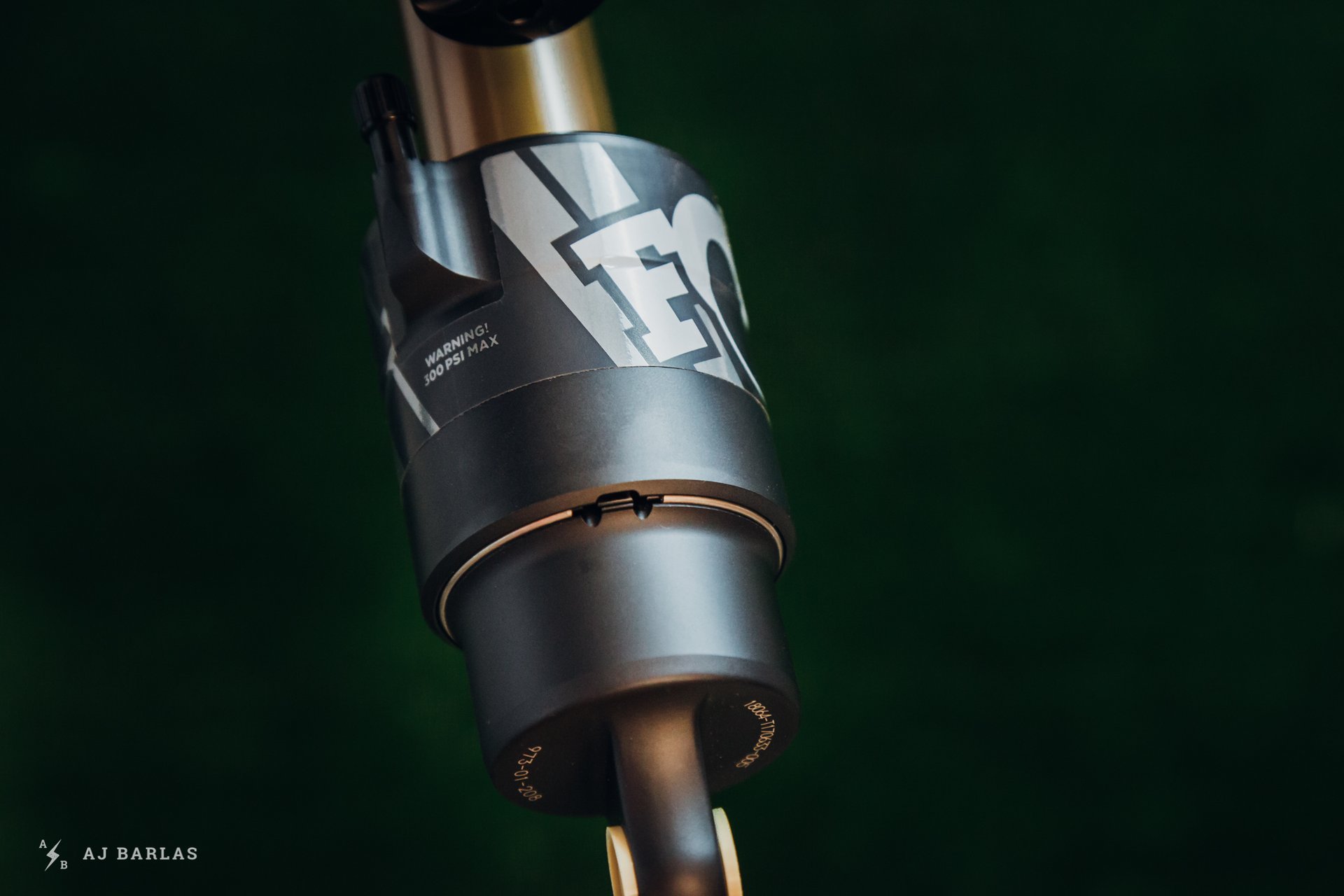
The new circlip fixture visible at the bottom of the air can. It's trickier to remove than the old grub screw, but still easy enough.
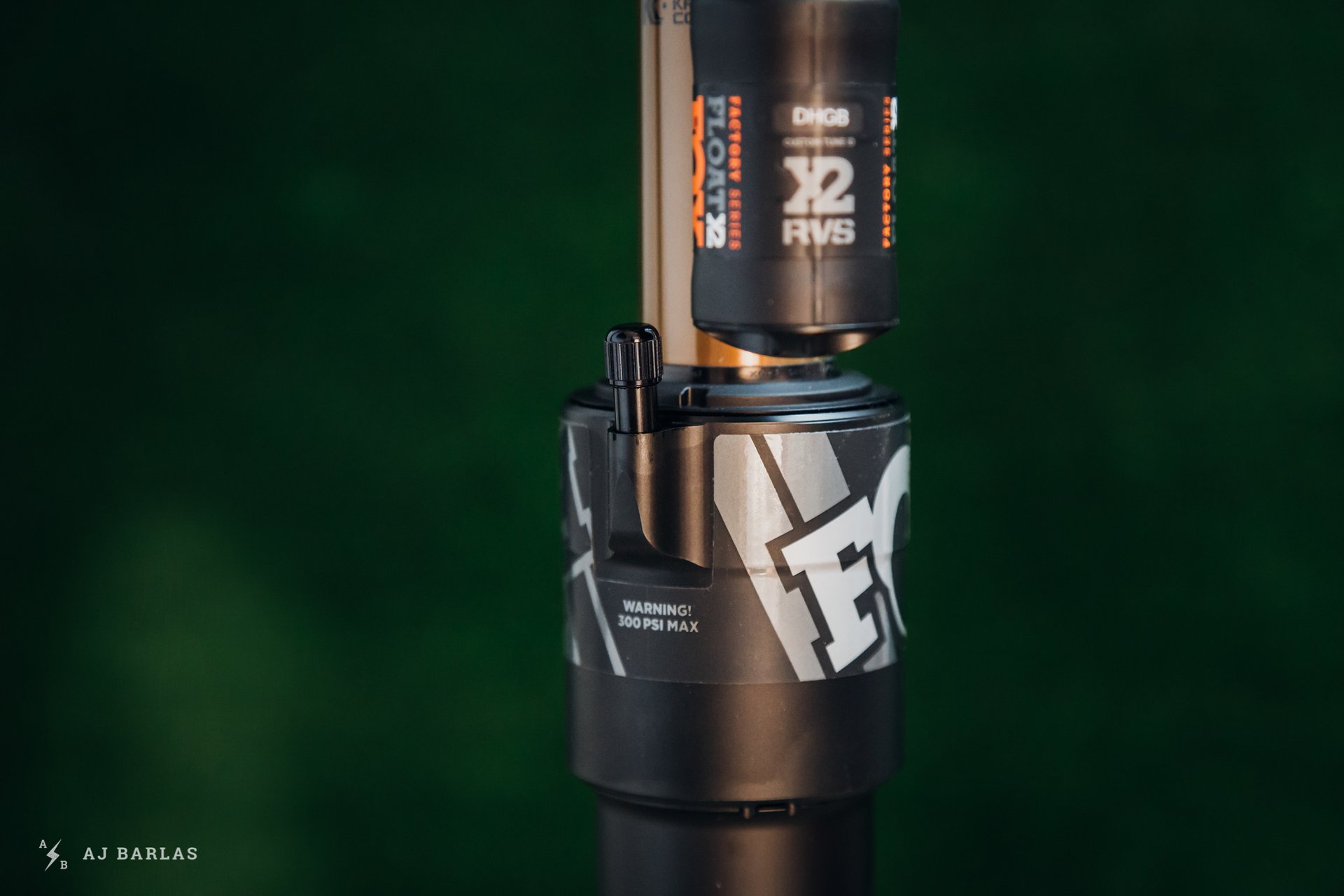
The air tank valve is angled away from the body of the shock. It's not enough to cause snags but does make a difference when securing a pump.
On my test bike the change created a sharp feeling in the last half of its travel. Adjustments to the damper during the initial ride weren’t enough to quieten this for me. Two of the three volume spacers from the X2 were promptly removed, with pressure and damper settings adjusted to suit. This improved the performance, allowing the air more space to compress as the suspension went deeper into the stroke. There were further trail-side damper adjustments made but on my G16, I still found it a little sharp for my liking.* In rough terrain I found the bike pitched my weight forward with the new shock. Changes to the fork to balance the effects helped, but then the front wasn’t performing at it’s best. Adjusting the rebound circuits on the shock adversely affected traction elsewhere as did further adjusting the compression.
*The G16 has a progressive suspension curve of ~56% and as I discovered, doesn’t need the help of the integrated bottom-out bumper
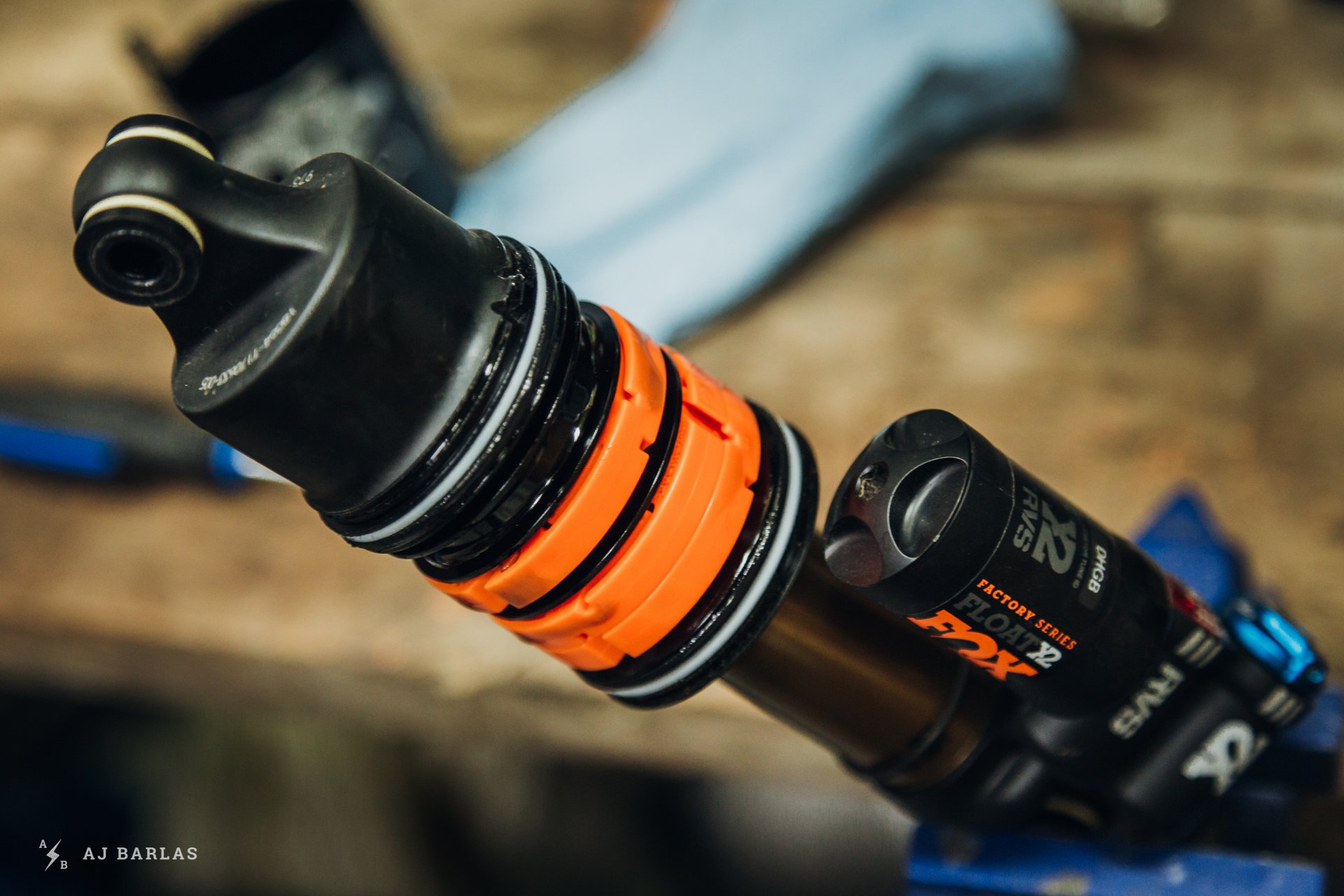
The integrated bottom out bumper is hidden away inside the bottom of the shock (far left). The spacers and their placement has changed, with less open space and more defined positions on the 2019 X2.
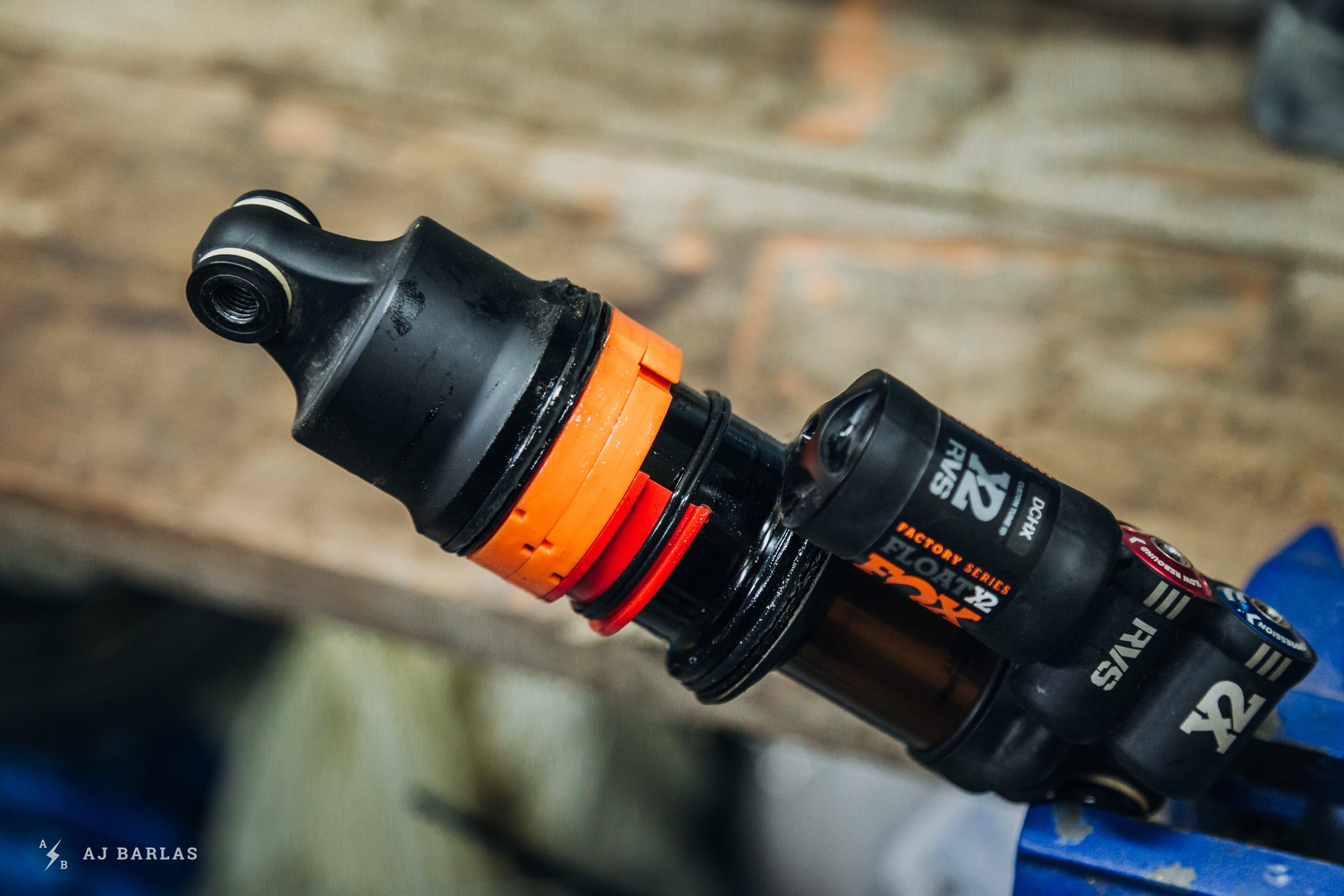
The 2018 internals and the red clip that is supposed to prevent users from overstuffing their X2 beyond Fox's recommendations. The new shock removes that possibility completely.
Switching between the 2018 and 2019 X2 shocks proved that on the G16, I don't feel the X2 benefits from the bottom out assistance. For me, the G16’s progressive suspension curve worked exceptionally well with the previous X2, sans mechanical bottom out. However, there are many bikes that should be more compatible. Some may also prefer to run more damper and work with the extra ramp in the air spring. Without testing on other bikes I cannot confirm this (though I aim to try in the future), but any rider that finds themselves stuffing their shock full of volume spacers is a good candidate for the 2019 model. Testing with the G16 and Fox X2 is currently ongoing, but these have been my findings as of writing.
As with the 2018 shock, damper control is exceptional, with a wide, tunable range to meet most rider and bike requirements. The increased maximum pressure of the XV EVOL air can will also be welcomed by anyone who requires higher pressures.
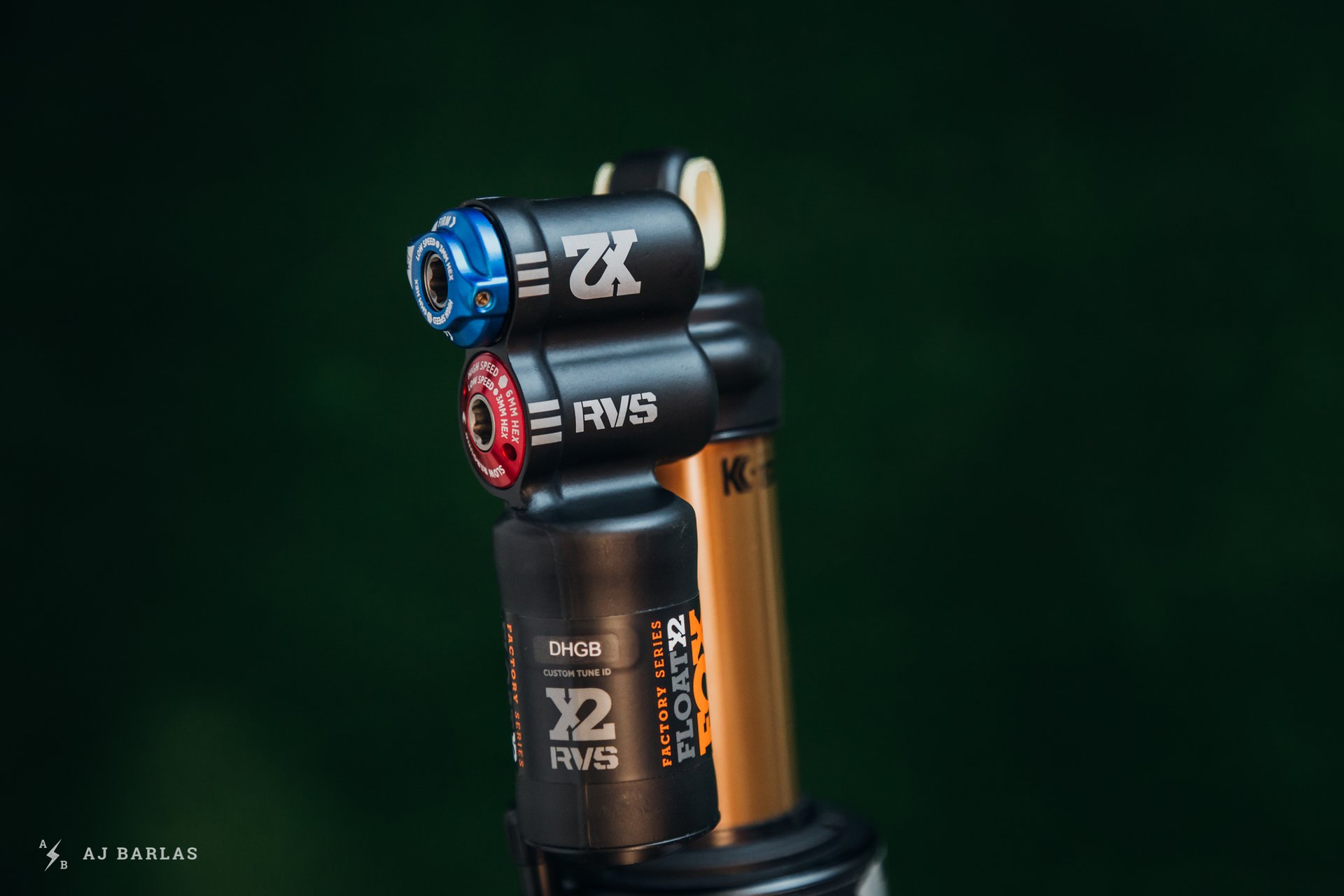
Nothing different to see here. The 216x63 X2 comes with the two-position compression lever.
Together the updated dampers pair exceptionally well. While the less aggressive curve of the 2018 shock is preferred on my bike, the new suspension was still remarkable. Externally it may not seem like much has changed with the 2019 suspension, especially the Float X2, but in practice the updates are significant. Adjustability is among the widest there is available and although it may be too much for some, those seeking the most control of their bike, who are happy to twist dials and write notes, will not be disappointed. Head to the Fox website for more on the 2019 Fox 36 GRIP2 fork or Float X2 shock.







Comments
Jerry Willows
5 years, 7 months ago
instead of Live Valve or whatever it's called, Fox should have invested in their CSU's durability.
Reply
Slim
5 years, 7 months ago
Does the fork come with a bucket of extra CSU's?
Reply
goose8
5 years, 7 months ago
THIS. Preferably ones that don't creak.
Reply
[user profile deleted]
5 years, 7 months ago
This comment has been removed.
goose8
5 years, 7 months ago
I can only speak from my own experience... I have a 2018 Fox 36 Performance Series. It has 5 months of riding on it, and has been out of commission for more than a month of that time. My shop rebuilt it once (excess grease plugged port between air chambers), it went in for warranty service in July, and is back for another warranty service now to address a creaking CSU. This will likely be my last Fox fork.
Reply
awesterner
5 years, 7 months ago
My 2018 Performance Elite RC2 was creak free on my Sentinel until about month 6. Still one of the better, most consistent feeling forks I've owned. But yeah, creaks are very, VERY common this year, again....
Maybe it's the really slack bikes these days putting a lot of stress on the CSU. That being said, Jerry is right, they should have invested some of their money into 1 piece CSUs or SOMETHING that makes them creak free!
Reply
Velocipedestrian
5 years, 7 months ago
The overflow oil path in the new fork damper is the first thing I've seen Fox lift from their purchase of Marzocchi.
Reply
Brad_xyz
5 years, 7 months ago
How many clicks of High Speed Compression did your Grip 2 test fork have? Mine has around 32 instead of the 16 listed in the manual. There is a forum thread on this over at MTBR so it seems to be a common issue on early releases of this fork. The confusing thing is that Fox seems to be saying different things to different people on how this issue affects the adjustment of the fork.
What were your HCS and LSC settings once you were finished dialing it in?
I've currently got both compression settings wide open to try to reduce forearm fatigue. I'm actually beginning to wonder if I have the 20wt gold oil in my damper side and the 5wt teflon infused oil in the air side (reverse of what should be) because all my damper settings (rebound as well) are way lighter than what fox recommends. Otherwise the fork just feels over-damped for me. In fact, with fox's recommended settings my bike actually slows down going over carpets of large roots or rocks because the damping is working so hard. It's like someone is applying the brakes.
On the other hand, this fork is amazing when I get myself in over my head so maybe some arm pump is just the price to pay for that confidence. However your experience with the fork compliance seems to be radically different.
Reply
A_Marriott
5 years, 7 months ago
Brad_xyz ; Fox has updated the tuning guide online, hope this helps:
"FOX recommends turning adjusters fully clockwise until they come to a gentle
stop (approximately 2 in-lb/ 0.2 Nm torque) then turning counter-clockwise to the
recommended setting. Any High-Speed Compression settings beyond 16 clicks out
from fully closed do not change damping. While the HSC adjuster may have more
than 16 detent clicks, only the 16 positions closest to fully closed are designed for
use. Any clicks beyond 16 out from fully closed are due to the configuration of the
adjuster and will not affect performance in any way"
https://www.ridefox.com/dl/bike/605-00-177-revB.pdf
Reply
Endur-Bro
5 years, 7 months ago
Except for the complaints on mtbr.
LOL FAUX SHOX.
Too bad I keep buying them...
Reply
AJ Barlas
5 years, 7 months ago
Hey Brad.
Your situation sounds odd and it’s possible that something may be wrong, or the setup could use some work. I often suffered from hand and arm fatigue with older RS products and last years RC2 had some (as noted that was mostly wide open on compression). In some cases I was running too firm of a spring or too many tokens in an effort to get the mid-stroke I was after. This fork amended those concerns for me. I can’t even consider runnig this with the compression out because it doesn’t provide enough support in times of need.
Have you had a technician look at yours yet?
Reply
awesterner
5 years, 7 months ago
The last few years I've been running the Fox forks with more tokens and open as recommended by some reputable tuners. However this year, suspensionwerx recommended just the one token that came with my Sentinel, and keeping it around the recommended dial settings (RC2). Has been fantastic, had me wondering why I didn't tune it this way in the past.
Reply
Brad_xyz
5 years, 7 months ago
This comment has been removed.
Brad_xyz
5 years, 7 months ago
Well I finally got back in town and had a chance to look at this issue closer and am posting what I found here in case anyone ends up back here at some point. First thing I did was check the oil in my lowers and make sure I hadn't had a dyslexic moment and mixed up the two when I last changed it. Fortunately that looked good.
While I was at it, I played around with the fork with no pressure in it and the valve stem removed. For anyone who is having trouble setting up the LSC / HSC, this is a great tool to learning how they work and interact. This also helped me verify that what the new Fox instructions are saying about the HSC adjustment appears to be correct even with my extra 'clicks' (thanks for that @A_Marriott).
The next thought I had while I was away was that maybe my problem was not actually damper related but instead was on the air spring side. This was especially the case because I had already installed a Vorsprung Luftkappe in hopes that it would make things better and found that it made no positive difference and possibly made my issue with arm pump / 'harshness' worse. Since this air spring already naturally has a lot of mid stroke support and the Luftkappe just amplifies that I was wondering if I should actually be reducing my initial pressure / increasing my sag because I was actually getting too much mid stroke support (too high a spring rate in the travel beyond sag). As a result I reduced the pressure from just under 100 psi to around 86 psi and increased my sag from around 18% to around 25%. I also re-installed 1/2 token (I had removed the one stock token when I first installed the Luftkappe as it has a similar effect on the positive air chamber). Finally I set the LSC at the recommended setting from the Fox manual and the HSC setting one additional click out (faster) from the recommended setting.
My first ride with this set up was a lot better than before and more along the lines of all the rave reviews I have been reading. I did bottom the fork out for the first time ever on this ride (although I could not pinpoint when) so I went back to the stock 1 full token + the Luftkappe which seemed just about right on my second ride.
So it seems, at least for me, that I need to run significantly more sag on this fork to get the feel I like. I've always run my Rockshox forks (a DPA Pike and DPA Lyrik) at around or just under 20% so this is a bit of a change for me. I actually think I might change out the 160mm air spring in this fork for a 170mm one and run that at even more sag (maybe around 27-28%) to get a very similar ride height, although I may pay for that with more peddle bob while standing and climbing.
The one thing that still seems off to me are Fox's recommended rebound settings. I'm currently running LSR 12 clicks out from closed/slow (2-3 is Fox's recommended setting for my weight and pressure) while my HSR is 3 clicks out from closed/slow (2 is Fox's recommended setting for my weight and pressure).
Reply
Brad_xyz
5 years, 7 months ago
I had my daughter do some slow motion video of myself riding down some stairs with the Fox recommended settings and my settings and the fork was definitely packing down / not reacting fast enough with Fox's rebound settings.
Reply
Mattck
5 years, 3 months ago
Can I remove bottom-out bumper from my X2?
Reply
Brad_xyz
4 years, 6 months ago
I know I'm really late to the party on this comment but I'm thinking something similar. I never use full travel on my x2; there is always between 0.5 and 1 cm left even if I feel like I'm bottoming out pretty hard. I actually thought the x2 was just like the Fox 36 fork in that it did not use all the stanchion travel but when I let all the air out and fully weighted it with a slight bounce I could get travel all the way to max or within a mm or 2 at least. I think the bottom out bumper is either too long or too thick. I need to get some shaft clamps to take the end of the shock off to get it out and trim it to either be shorter or a cone shape instead of the current cylinder shape.
Reply
Please log in to leave a comment.